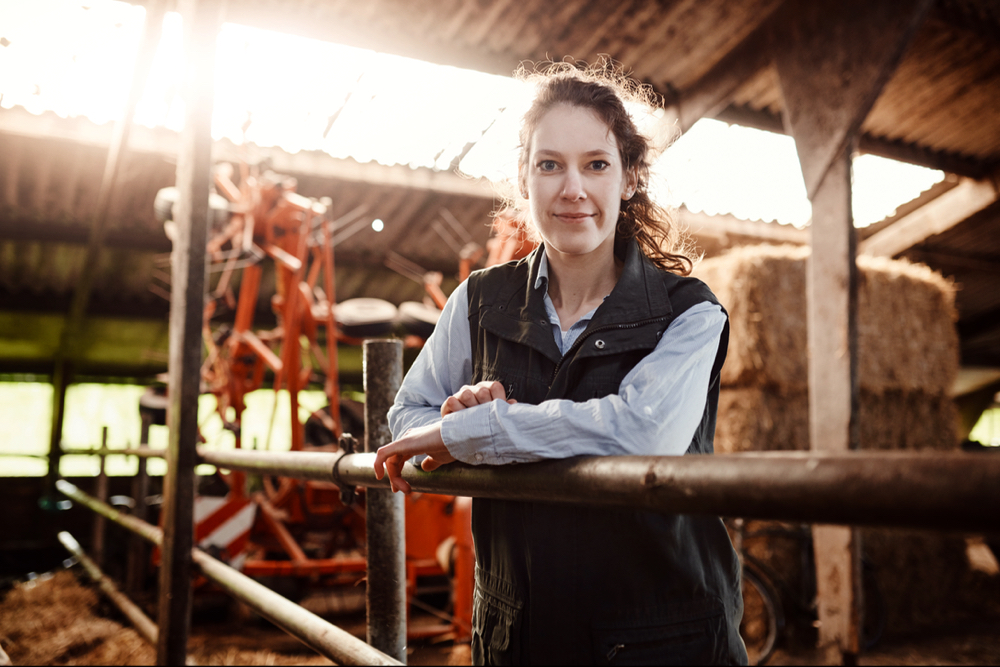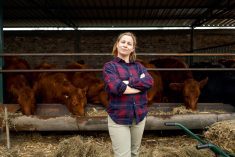“Times they are a-changing. Of course times always change but in this period of rapid technological advancement and information accessibility, the change occurs even more quickly and on a larger scale. Change is a part of everyday life. To be successful and progressive we must welcome that change. It no longer works to do things simply because our fathers and forefathers did it that way. Change also means being flexible and adaptable.
A multitude of books have been written to examine where we are as a society and where we are going. The premise being that one cannot plan and anticipate the future if they do not understand what is happening in the present and what happened in the past. As John Naisbitt, author of Megatrends says, “The most reliable way to anticipate the future is to understand the present.”
Read Also

Picking the most efficient cows to rebuild your cow herd
A new cow ranking system to help beef farmers and ranchers pick the most efficient cows as they rebuild their herds.
Interestingly enough, I wrote this over 30 years ago. The topic of change has been a recurring point in my column and apparently, I have been pondering it for a long time.
I recently read an excellent quote, which has been attributed to a few different people: “People resist change because they focus on what they are going to lose, not what they are going to gain.” Along the same lines, remember that the rear-view mirror is smaller because you are not going that way.
The late Allan Nation, former publisher and editor of the Stockman Grass Farmer, said: “When presented with a new challenge, there are three things we can do: nothing, more of the same, harder, or change.” I think many of us try the “more of the same, harder” option before we move to change.
So how can we become better at adapting to and handling change? The Kubler-Ross diagram of change (below) shows the different stages from shock, denial, frustration, depression, experimentation, decision and integration. The curve has also been used to describe the stages of grief. It illustrates how the situation is likely to worsen before it gets better, but also that the level of integration is above where we initially started from.

Of the many change management strategies out there, the one developed by Dr. John Kotter applies to the agriculture industry. He bases his approach on four principles and then recommends eight steps.
The four principles are:
- Select few + diverse many (engage people with differing perspectives)
- Have to + want to (helping people to feel they have a choice and switching the mindset from “have to” to “get to”)
- Head + heart (action must be driven by both the head and heart)
- Management + leadership (management is important but it is vital to include more leadership)
Kotter’s eight steps are:
- Create urgency
- Form a powerful coalition
- Create a vision for change
- Communicate the vision
- Remove obstacles
- Create short-term wins
- Build on the change
- Anchor the changes in corporate culture
According to the Prosci change management concept, one of the first questions to ponder is what are our reasons for changing? Where are the objections? Is the team on board with your assessment of the first two questions? Have we created a shared vision that people are excited about? What day-to-day activities need to change and do people feel they have the support and resources they need? How will we monitor progress and keep people accountable? Be sure to celebrate the successes!
Succession of a business to the next generation falls under the category of major change. So does making a major change to our enterprises: expanding from cow-calf to yearlings, adding a custom element, buying or selling land, or starting a direct marketing component. Really, anything that is different from “that is how we have always done it” is a major change.
An article, The Human Side of Change Leadership (asq.org), sums it up well: “Even carefully planned efforts to introduce change can be short-lived if the human element is neglected or left to chance. When planning a change it is important to identify potential resistance to the changes and then design motivation into the process. It is not always true that resistance stems from a lack of desire to change or a lack of motivation. Successfully bringing about change requires knowledge and practice. By addressing readiness for change, identifying the potential reasons for resistance, and building in the right consequences, the chances that improvements will be sustained are greatly increased.”
As we begin navigating through 2022 and all the uncertainty around weather and moisture conditions, markets, the economy and our individual circumstances, keep some of these points in mind.
















